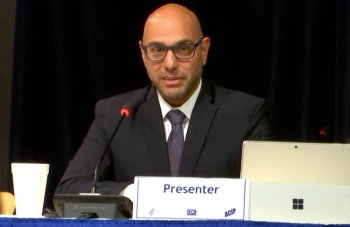
Simeprevir, sofosbuvir combo treats HCV patients with cirrhosis
The protease and polymerase inhibitor proved effective and well tolerated in patients with hepatitis C virus and cirrhosis, according to a new study.
A combination of the protease inhibitor simeprevir and the polymerase inhibitor sofosbuvir for 12 weeks was effective and well tolerated in treatment-naive and treatment-experienced patients with hepatitis C virus (HCV) GT1 infection and cirrhosis, according to a new study.
“The primary objective of the phase III OPTIMIST-2 study was met as simeprevir plus sofosbuvir demonstrated superiority in SVR12 rates (83%) as compared with the historical control (70%). This data provide further evidence of the clinical effectiveness of simeprevir plus sofosbuvir in HCV GT1–infected patients with cirrhosis,” Eric Lawitz, MD, clinical professor of medicine at the University of Texas Health Science Center in San Antonio, Texas, told Medical Economics.
The researchers published their
Patients infected with HCV with cirrhosis are historically a difficult-to-treat population and are at risk of hepatic decompensation. In the phase II COSMOS trial, researchers evaluated simeprevir, an HCV NS3/4A protease inhibitor, plus sofosbuvir, an HCV nucleotide analogue NS5B polymerase inhibitor, with or without ribavirin for 12 or 24 weeks in HCV genotype GT1–infected patients. They found high rates of sustained virologic response after planned end of treatment (SVR12), including in patients with cirrhosis.
Based on the favorable results of that study, the researchers opened OPTIMIST-2, which is a single-arm, open-label study conducted in the U.S. and Canada. The 103 genotype 1 HCV-infected patients both naïve and treatment experienced with compensated cirrhosis received a 12-week regimen with 150 mg of simeprevir once daily plus 400 mg of sofosbuvir once daily. The primary objective of the study was to show superiority over a composite historical control.
“The presence of certain baseline factors, such as genotype 1a with Q80K and prior treatment experience, was associated with a lower SVR12,” said Lawitz. “In patients with higher baseline albumin levels ≥40 g/L, higher SVR12 rates (94%) were observed irrespective of any other baseline factors as compared to patients with levels <40 g/L (74%).”
Baseline factors such as IL28B genotype, race, BMI, and HCV viral load at baseline did not seem to influence the probability to achieve SVR12, he said.
Also, patient-reported outcomes improved from baseline to follow-up at week 12.
Adverse events occurred in 70% of patients, with 64% being grade 1 or 2.
Among patients with chronic HCV infection, about 20% progress to cirrhosis. Studies have shown that HCV-infected patients with cirrhosis are less likely than patients without cirrhosis to respond to pegylated interferon-based regimens. “Although there is no head-to-head data comparing simeprevir and sofosbuvir versus simeprevir plus pegylated-interferon/ribavirin (PegIFN/RBV), an overall higher SVR12 rate was seen with simeprevir and sofosbuvir versus simeprevir plus PegIFN/RBV,” he said.
Lawitz added that “in this study, all patients with cirrhosis with baseline NS5A polymorphisms achieved SVR12, indicating that these polymorphisms had no impact on the efficacy of the simeprevir plus sofosbuvir combination.”
The study does have some limitations, he said. These include the lack of a comparator arm, the open-label nature of the trial, and the low patient numbers in some subgroups.
Newsletter
Stay informed and empowered with Medical Economics enewsletter, delivering expert insights, financial strategies, practice management tips and technology trends — tailored for today’s physicians.















